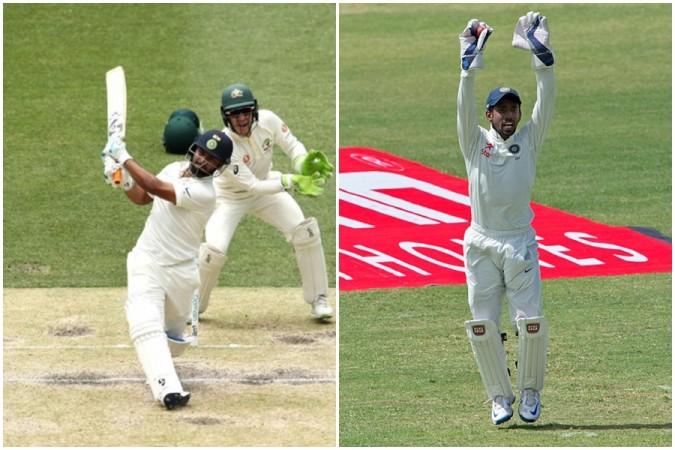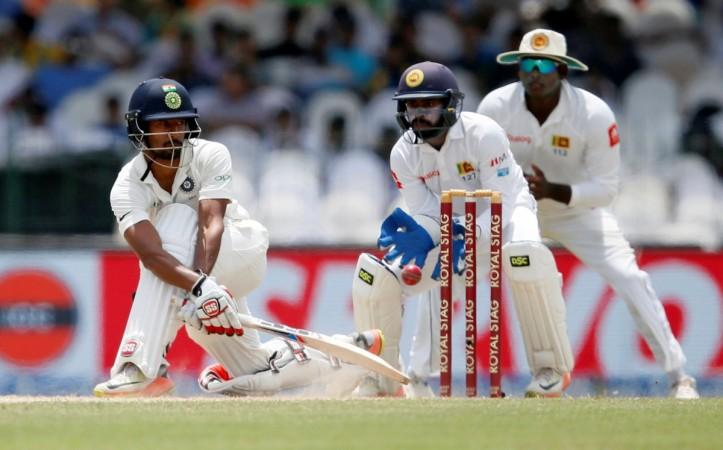
Indian selectors have brought back wicketkeeper-batsman Wriddhiman Saha into the Test squad despite the presence of Rishabh Pant – the incumbent who has achieved much success in his career since making his debut last year. Some people have criticised this decision as they feel Pant is the man to bank on for the future of the Indian Test side. The selectors have said this decision is part of the unofficial policy of bringing back players who lost their place in the team due to injury.
This is the policy that led to Ajinkya Rahane replacing Karun Nair in the very next match after the latter scored a triple hundred. So, the big question is: Will Wriddhiman Saha, the man who performed the duties of wicketkeeper-batsman of the Indian Test side with distinction, be immediately brought back in the XI and Pant made to sit on the sidelines?
If that happens, there will be a huge uproar in the media and criticisms would pour in over the exclusion of a 'special talent' like Pant. But would it be right to not give Saha another go in the team? Is Pant actually so much better that there is no reason to drop him?

The answer to the first question is yes and to the second, no. If one looks at the performances of Saha and Pant, without taking into consideration all the IPL exploits of the Delhi youngster, it is clear that the keeper from Bengal is as deserving, if not more, as Pant to have a place in India's Test XI.
Let's first look at the primary role that the two men will have to play if they take part in the West Indies series – wicketkeeping. It's not hard to recognise that Saha is way better as a keeper than his younger colleague. While he may have scored two hundreds and more since coming into the team, Pant has also been quite profligate in dropping catches and missing stumpings. On the other hand, Wriddhiman has been one of the best keepers in the world. So, there is no contest there.
Now, let's look at the other aspect of their roles in the team – batting. Most cricket fans would prefer Pant over Saha in the batting department. But is that the correct assessment of their batting abilities?

Yes, Pant has two Test hundreds – one each in England and Australia. That is impressive. But those innings were played on flat pitches and, in the second instance, against a disheartened and tired bowling attack.
Saha's batting style may not have the flair and style of Pant but he has played some extremely crucial knocks in high-pressure situations. It is quite apt that he is making his comeback in a series in West Indies because it was there that, in 2016, he pulled the Indian team out of a crisis, when their top-order had been taken out. In helpful conditions for seamers and only Ravichandran Ashwin to bat with, the Bengal keeper batted with great resolve and determination to take his team to a first-innings score that led to a win.
But that wasn't the only time when Saha's grit was on display with the bat. In the same year, he scored fifties in each innings of a home Test against New Zealand – again in testing condition with a good bowling attack proving tough for the Indian batting order. These knocks prove that Saha is a very reliable batsman at no. 7.
While Pant has, at times, played irresponsible shots and looked vulnerable in good bowling conditions, Saha has proven himself useful in difficult scenarios. So, if you want a batsman to bat for your life from among these two, it has to be Saha.
The decision to bring back Rahane in place of Nair proved to be the right decision as the current vice-captain has proved to be a very vital member of the team. That may happen with Saha as well. Also, there is no reason to, presently, sacrifice Saha in preparing for the future. The World Test Championship starts right away and will last for two years. The 34-year old can still serve Indian cricket for two to three years more.















